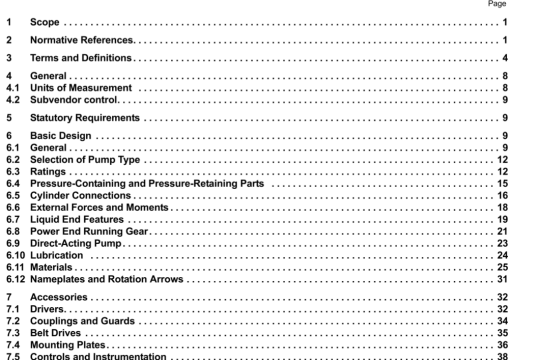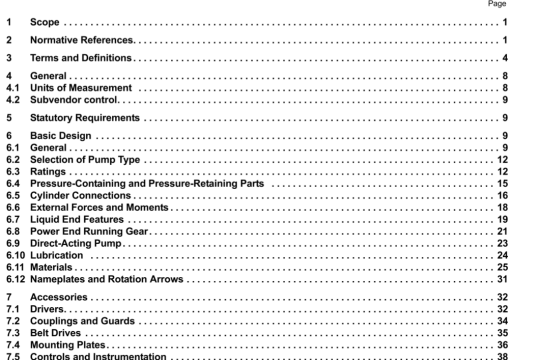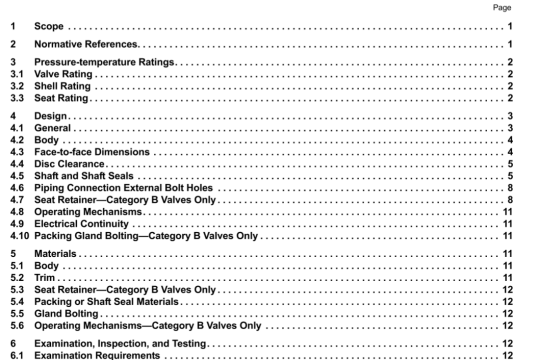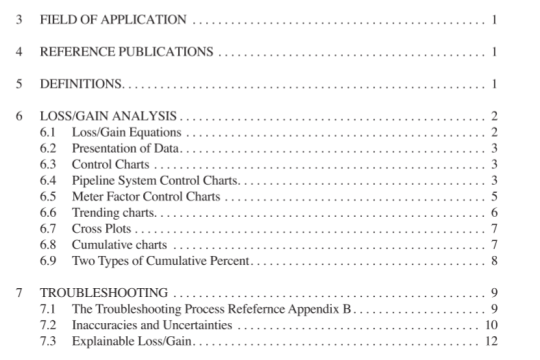API MPMS 7.1:2017 pdf download
API MPMS 7.1:2017 pdf download.Manual of Petroleum Measurement Standards, Chapter 7.1 Temperature Determination Liquid-in-Glass Thermometers.
6.2.3 Angle-stem Assembly
The angle-stem thermometer in Figure 4 is Installed in a standard metal-separable well or socket W a tank For vertical tanks with capacities greater than 795 m3 (5.000 bbl). the gtass stem of the thermometer shall be at least 0.9 rn (3 ft) long, excluding the graduated portion, and shall be protected with a light metal tube. For storage tanks with capacities less than 795 m3 (5.000 bbl). the stem may be 0.3 m (1 It) long, excluding the graduated portion, and also shall be protected with a light metal tube. The sensstlve portion of the thermometer shall not exceed 60 mm (2.5 in.), and the stem may have an angle o190 degrees or greater to conform to the contour of the lank shell.
Attach the assembly to the well by a threaded coupling. A thermometer with a separate graduated scale is acceptable as long as the markings on the scale are perrnanentty engraved and temperature lines at approximately 27 C (80 F) intervals are etched on the glass stem of the thermometer to coincide with the corresponding lines on the scale.
In addition to applications discussed in this section, angle-stem thermometers may be used in pipeline metering and prover applications to measure the temperature of the proving medium, but shall not be used for oustody transfer measurement.
6.3 Thermowells
The use of Ihermowells is required in dynamic temperature rrieasurenienl to i5otate the liquid material Iron, the temperature sensor, There are two general classification types of thermowells: test wells and sensor wells,
6.3.1 Test Thermowells
Test wells are thermowels installed for occasional use (temperature checking). and capped when nof in use. Test wells shall be installed adjacent to sensor wells, A suggested location is within three (3) pipe diameters (maximum to 7.1.1.1 Tank T.mperatur. Stratification
Temperature differences between the external environment and the tank liquid along with vanahons In product temperature as the tank is filled are primary causes of stratification. Heat sources internal to the tank may also result in stratification. The degree of temperature stratification is dependent on the duration of the liquid in the tank, the homogeneity of the liquid, the ease with which natural convection or forced circulation results in temperature equilibnurn and the temperature differential relative to the environment Heavy viscous liquids and tank contents formed from a mix of different grades of liquid are more likely to experience temperature stratification. Liquids that are much warmer or colder than the external environment are also more likely to stratify as the ground temperature below the tank is often more moderate than the surrounding environmental temperature. For marine cargo tanks, the temperature in adjacent cargo tanks may also impact stratification. Tank insulation limits the impact of environmental temperature differences but may not completely eliminate it.
Temperatures in large tanks, greater than 795 m3 (5,000 bbl), are often stratified unless the tank contents are thoroughly mixed. In the vertical direction, temperature differences as much as 3 C (5 F) are possible, and differences of 5 C (9 F) or more, may occur.
Tank temperature stratification may be reduced by tank fill, empty and transfer procedures, the use of pumps and by in-tank mixers.
In the horizontal direction, the temperature differences are typically less than 0.5 C (1 F) for low and medium viscosity petroleum liquids. Somewhat higher dilferences may be expected In high viscosity petroleum liquids and very large diameter tanks.
As shown I, Note 2 of Table 4, a difference between any two measurements of more than 1 C (2 F) will require additional temperatures to be obtáned at different levels that are equally spaced apart The readings shall then be averaged arid rounded to the nearest 0.05 C (0.1 F). All tanks with a nominal volume of less than 795 m3 (5,000 bbl) are assumed to be NOT stratified for the purpose of temperature measurement procedures outlined In this standard unless otherwise agreed by all parties impacted by the measurement.




